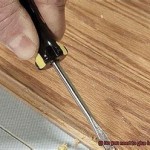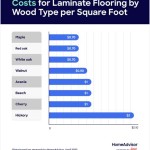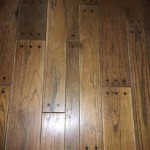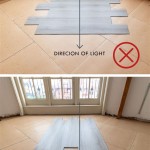Water Damage and Laminate Flooring: Understanding the Risks, Prevention, and Remediation
Laminate flooring is a popular choice for homeowners and businesses due to its affordability, durability, and aesthetic appeal. Mimicking the look of hardwood, tile, or stone, laminate offers a versatile and cost-effective flooring solution. However, one of the primary vulnerabilities of laminate flooring lies in its susceptibility to water damage. Understanding the causes, consequences, and potential remedies of water damage to laminate is crucial for maintaining its longevity and preserving its appearance.
Laminate flooring is constructed from several layers. Typically, the bottom layer is a melamine backing, designed to provide stability and moisture resistance. Above this lies a fiberboard core, usually composed of high-density fiberboard (HDF) or medium-density fiberboard (MDF). This core provides the main structural support of the plank. A decorative layer, a photographic image of wood, tile, or stone, is placed above the core. Finally, a transparent wear layer protects the decorative layer from scratches, stains, and fading. The seams between laminate planks are often the most vulnerable points for water penetration.
The fiberboard core, while providing strength, is highly absorbent. When exposed to water, it swells, leading to warping, buckling, and separation of the planks. The extent of the damage depends on the duration and severity of the water exposure.
Understanding the Causes of Water Damage in Laminate Flooring
Several factors can contribute to water damage in laminate flooring. Identifying these potential sources is the first step in preventing damage.
Leaks from appliances such as dishwashers, refrigerators, and washing machines are common culprits. A slow, undetected leak can seep under the flooring, causing significant damage before it is noticed. Similarly, leaky plumbing, including pipes and faucets, can introduce water into the flooring structure.
Spills, if not cleaned up promptly, can penetrate the seams of the laminate planks. Liquids like water, juice, and cleaning solutions can seep into the core, leading to swelling and warping. Pet accidents are also a frequent source of water exposure, often going unnoticed until the damage becomes apparent.
Flooding, whether due to natural disasters or internal plumbing failures, poses a significant threat to laminate flooring. Submersion in water for an extended period can cause irreversible damage, often necessitating complete replacement of the affected areas. Excess humidity can cause the laminate to swell and buckle over time.
Inadequate sealing around fixtures, such as toilets and sinks, can allow water to seep under the flooring. Improper installation of the laminate itself, particularly if the seams are not tightly joined, can also create pathways for water penetration. Lack of adequate ventilation in damp areas, such as bathrooms, can contribute to moisture buildup, increasing the risk of water damage.
Recognizing the Signs of Water Damage
Early detection of water damage is crucial for minimizing the extent of the problem and implementing timely repairs. Recognizing the signs of water damage can help prevent more extensive and costly repairs.
Visible warping or buckling of the laminate planks is a clear indication of water damage. The planks may appear uneven or raised, particularly along the seams. This is a result of the fiberboard core absorbing water and expanding.
Discoloration or staining of the laminate surface can also indicate water damage. Water can carry dirt and minerals into the flooring material, causing unsightly stains. Dark spots or rings may appear, particularly around seams or in areas where spills have occurred.
A musty or moldy odor is a strong indicator of water damage. Mold and mildew thrive in damp environments, and their presence suggests that water has been present for an extended period. This can pose health risks and requires prompt remediation.
Soft spots in the flooring are another sign of water damage. When the fiberboard core becomes saturated, it loses its structural integrity, resulting in a spongy or soft feel underfoot. This indicates significant damage that may require replacement of the affected planks. Gaps appearing between the planks or along the edges can be a sign of warping and expansion due to moisture.
Peeling or bubbling of the laminate surface can occur as water weakens the adhesive bonds between the layers. This is particularly common along the edges of the planks. A squishing sound when walking can also point to trapped water underneath, indicating the need for immediate attention.
Remediating Water Damage in Laminate Flooring
The approach to remediating water damage in laminate flooring depends on the severity and extent of the damage. Corrective measures range from simple drying techniques to complete replacement of the affected flooring.
For minor spills and leaks, prompt action is essential. Immediately wipe up any standing water with a clean, dry cloth. Use a fan or dehumidifier to dry the affected area thoroughly. Ensure adequate ventilation to prevent moisture buildup. Monitor the area for signs of further damage.
If the water damage is more extensive but relatively recent, removing the affected planks may be necessary. Carefully remove the damaged planks, taking care not to damage the surrounding flooring. Inspect the subfloor for signs of moisture or mold. Dry the subfloor thoroughly before replacing the planks. Replace the damaged planks with new ones, ensuring a tight fit and proper sealing of the seams.
In cases of significant flooding or prolonged water exposure, complete replacement of the laminate flooring may be the only viable option. Remove all affected flooring and inspect the subfloor for damage. Repair or replace the subfloor as needed. Allow the area to dry completely before installing new flooring. Consider using a moisture barrier underlayment to prevent future water damage.
For mold growth, professional remediation is recommended. Mold can pose serious health risks, and proper removal requires specialized equipment and techniques. A professional mold remediation service can identify the source of the moisture, remove the mold, and prevent its recurrence. Be sure to address the underlying cause of the water intrusion to prevent future mold growth.
Preventative measures are crucial for minimizing the risk of water damage to laminate flooring. Regularly inspect appliances and plumbing for leaks. Promptly clean up spills and pet accidents. Use mats or rugs in high-traffic areas and near water sources. Ensure adequate ventilation in bathrooms and kitchens. Consider using a sealant on the seams of the laminate flooring to provide extra protection against water penetration. A good underlayment with a moisture barrier can also help prevent water damage from below.
Choosing water-resistant laminate flooring can also mitigate the risk of damage. Some manufacturers offer laminate flooring with enhanced water resistance, making it more suitable for use in areas prone to moisture exposure. These products often feature a thicker wear layer and improved sealing technology. While not entirely waterproof, they offer a greater degree of protection against water damage compared to standard laminate flooring.
Proper installation is also key to preventing water damage. Ensure that the laminate flooring is installed correctly, with tightly joined seams and adequate sealing around fixtures. Follow the manufacturer's instructions carefully. Consider hiring a professional installer to ensure a proper and watertight installation.
By understanding the causes and consequences of water damage in laminate flooring, homeowners and businesses can take proactive steps to prevent damage and maintain the longevity and appearance of their flooring investment.

How To Prevent Repair Water Damage Laminate Flooring Claude Browns

How To Tell If Your Laminate Floor Has Water Damage San Mateo Ca

How Do I Camouflage Water Damaged Laminate Flooring Hometalk

A Guide To Fix Wet Laminate Floors All Dry Usa

How To Repair Laminate Flooring With Water Damage 12 Steps

Laminate Flooring Water Damaged Bunnings Work Community

Step By Guide On How To Fix A Laminate Floor That Got Wet

Why Am I Being Told That My Waterproof Laminate Flooring Needs To Be Pulled Up After Water Damage Restopros Of Northeast Georgia

How To Repair Laminate Flooring The Home Depot

A Guide To Fix Wet Laminate Floors All Dry Usa
Related Posts








